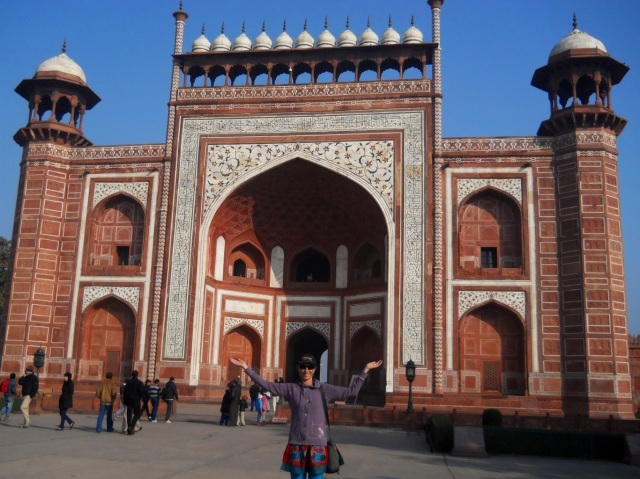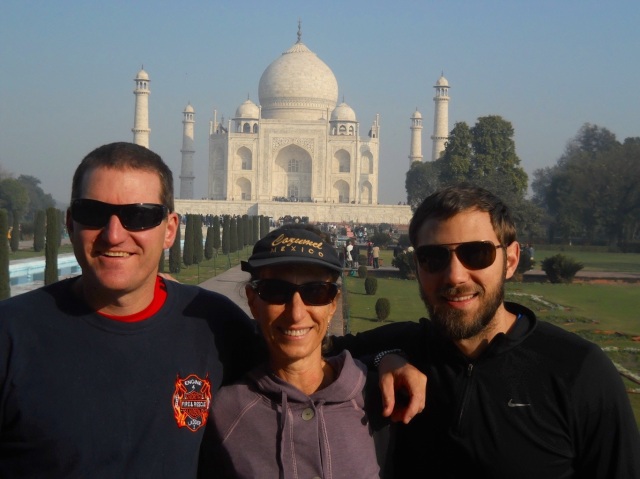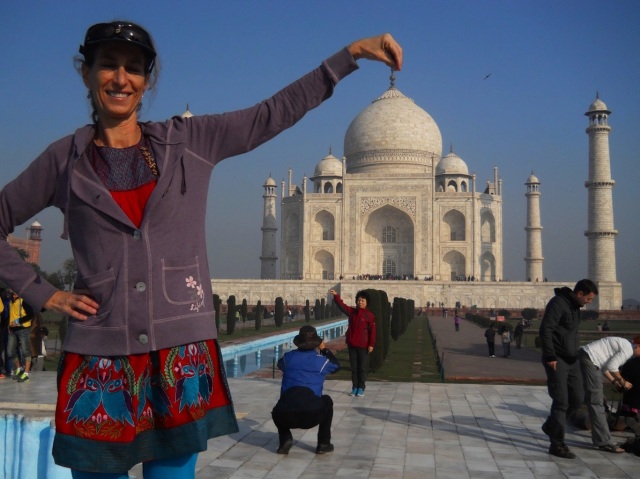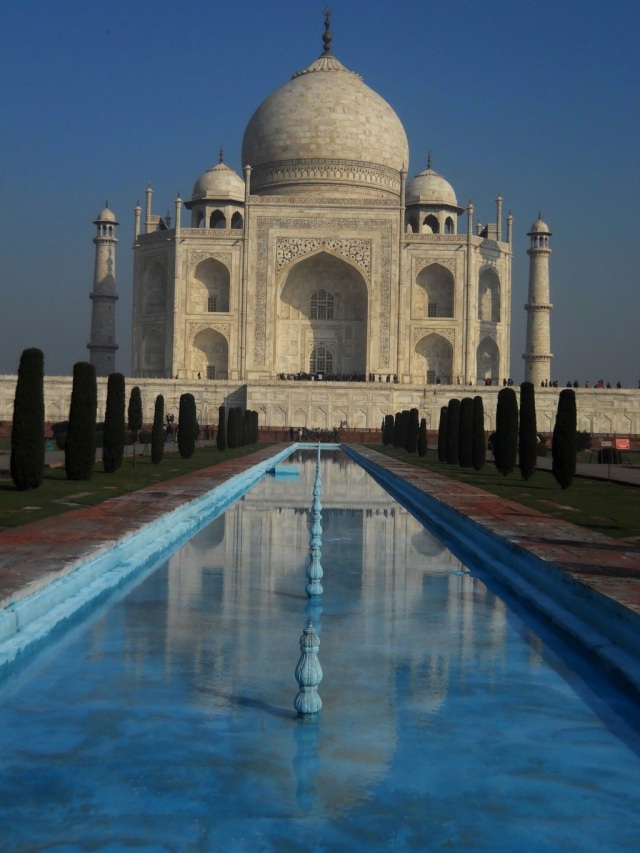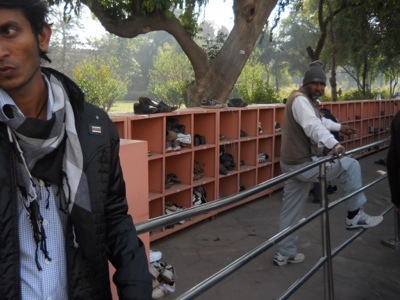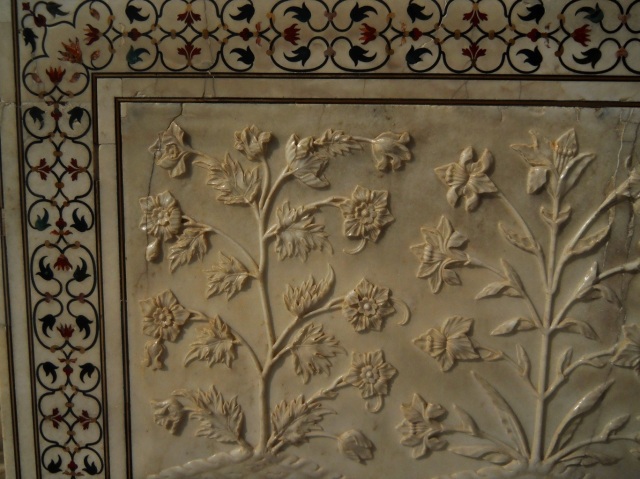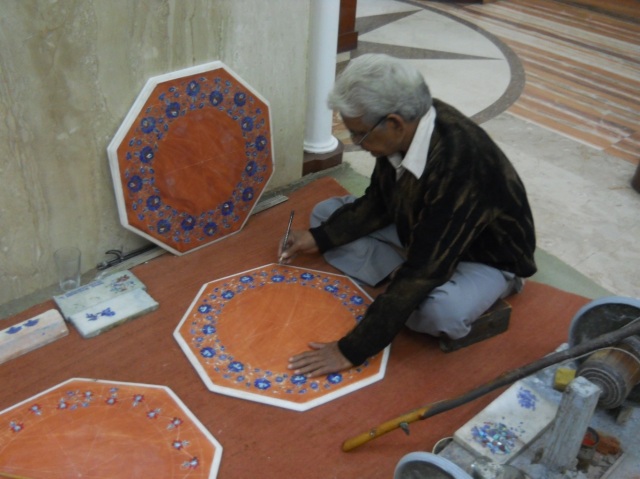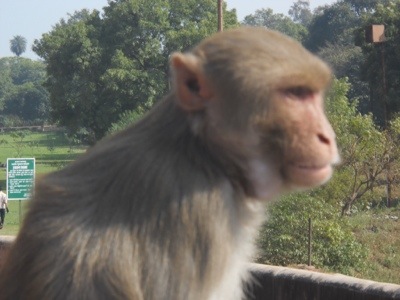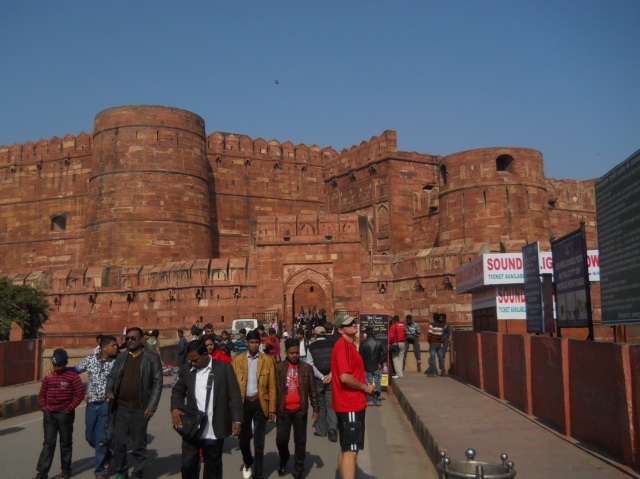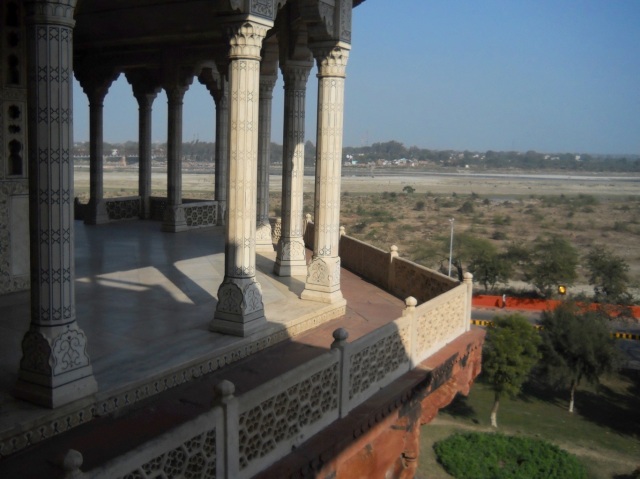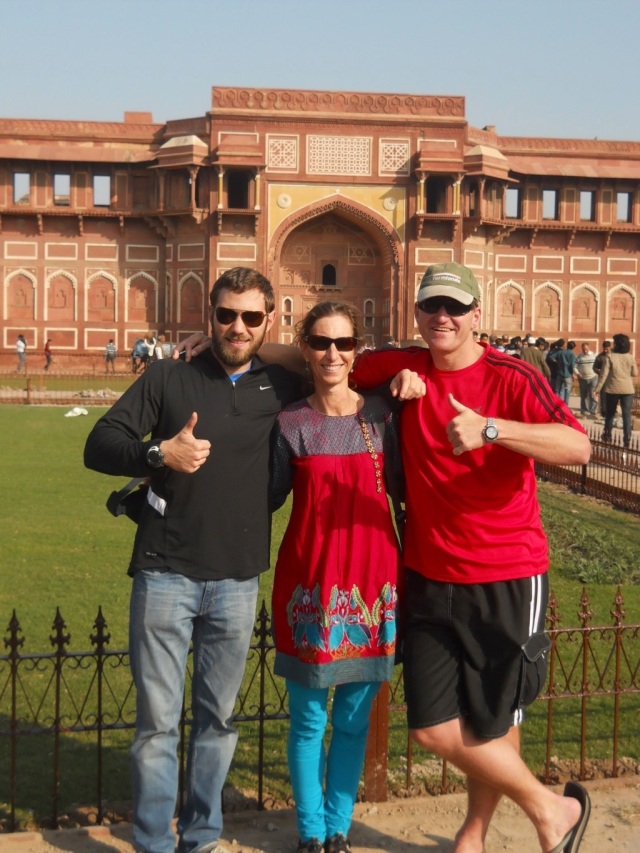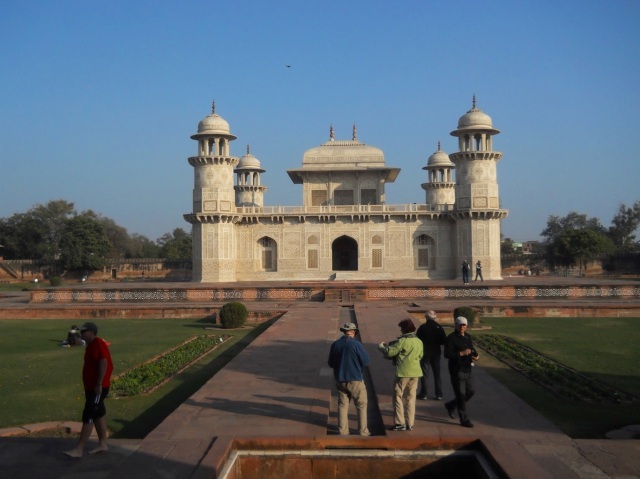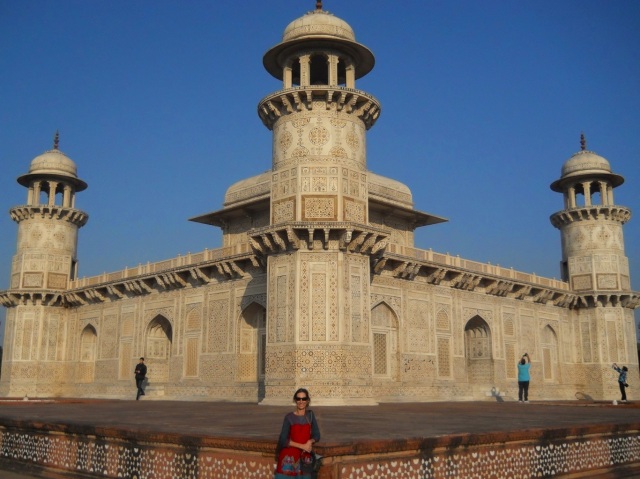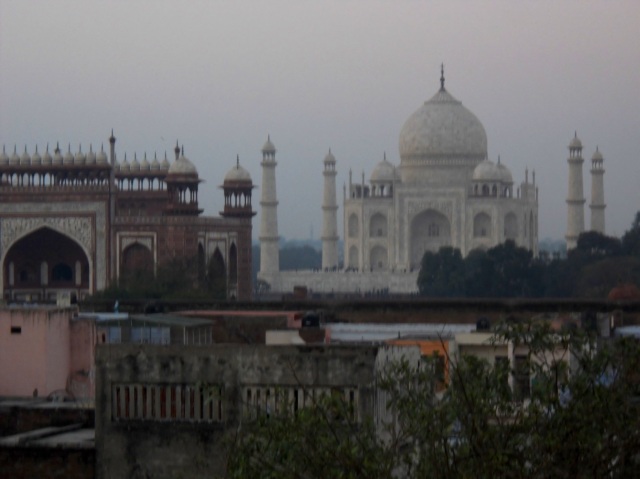Today we had a guide and driver and saw the main sights of Agra, listed above in the title. Jain was our guide, and he is a Jain. They are not allowed to kill any creature, including ants or mosquitos. He was so knowledgeable and knew all the best spots for photos. We took a lunch break at a Thali restaurant, where they serve the food in little bowls and keep refilling the puri, puffed bread.
I can only say the Taj is awe-inspiring. The Taj Mahal was built over 22 years in the 1660s by Shah Jahan, as a tomb for his beloved wife, Mumtaz, who died while giving birth to their fourteenth child. It is absolutely stunningly beautiful in its grandeur, proportions, and the way the white marble takes on the light at different times of the day.The semi-precious stones inlaid throughout the exterior and interior by Persian artisans, sparkle as the sunlight moves across the surface. The “Baby Taj” was actually built before the Taj by Nur Jahan.. She was married to Jahangir, who was an opium addict and a wastrel. She ran the country behind the scenes since he was unable to. She built this amazing tomb in white marble for her father. It was the first white marble tomb built by the Mughals.
The Agra Fort was first built by Akbar, the second Mughal emperor,and then added on to by his descendants. It takes up a huge area, and is surrounded by what was once a wet moat, filled with crocodiles and a “dry moat” filled with lions and tigers! Now it is occupied by monkeys. We saw where Shah Jahan lived the last years of his life imprisoned, or really under house arrest by his evil younger son who resented Shan Jahan’s favoritism of his oldest son. The evil son imprisoned his father and served him the head of his favorite son on a platter. We got to see the balcony, from which the imprisoned, elderly Shah Jahan, viewed his greatest monument to his departed beloved wife, a bitter reminder of his tragic fall. In the end, at least he was buried next to her inside the Taj Mahal.
Of all the bizarre cultural habits that we had trouble getting our heads around, the most astounding is about the eunuchs. Originally, eunuchs, or what we would called hermaphrodites, were considered specially touched by the gods by the ancient Hindus and called upon to bless new babies and newly wed couples. The Mughals employed forcibly castrated eunuchs to watch over the many women in their harems. After the Mughals fell, certain men “chose” to be castrated to carry on the eunuch tradition. However, now they extort people to pay them to go away. For instance, our guide, Jain, had to pay them tens of thousands of rupees when his son was born, the first male in his family in seventeen and a half years, to keep them from making noise and dancing lewdly in a group outside his house. We kept asking, “Why did you pay them?”
“Because it is shameful to have them dance lewdly before your home.”
“But why don’t you call the police?”
“It doesn’t matter. The superintendent of the neighborhoods informs the eunuchs of births and weddings.”
“But that’s extortion!”
He shrugs.
Later, in Delhi, we learned a new expression: TII, which stands for: This is India!

